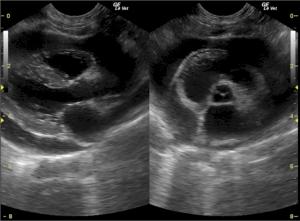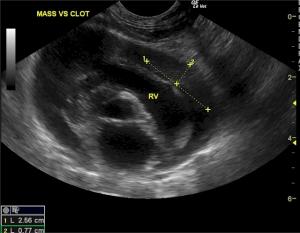Clinical Differential Diagnosis
(Remo Lobetti PhD, DECVIM):
Cardiac disease - dilated cardiomyopathy, hypertrophic cardiomyopathy, pericardial effusion
Renal disease - chronic kidney disease, pyelonephritis, neoplasia, renoliths
Pulmonary thrombo-embolic disease.
Sonographic Differential Diagnosis
(Lindquist DMV, DABVP): Pericarditis, neoplasia, vasculitis, F.I.P.
Sampling
30 cc of hemorrhagic effusion was removed for the pericardium via US-guided pericardiocentesis.
Outcome
Cardiac fluid analysis revealed intracellular and extracellular cocci bacteria forming chains. Culture revealed Beta-hemolytic Streptococcus 3+. Cytological Dx: Septic suppurative pericarditis.




Comments